MADLY prides ourselves with having the world’s finest 0.1% of coloured gemstones, and the widest range of rare, top quality gems in Singapore, a feat only possible because of our discerning network of miners, gem cutters and partners around the world. Early 2020, MADLY invested in a sourcing office right in the mining production region of Morogoro in Tanzania, where some of Mother Nature’s most stunning gemstones are found. By having a presence right at the source, MADLY will be able to get our hands on top-of-the-line gem roughs, and also be able to ascertain the mines from which these gems come from.
In the coloured gemstone industry, gems are sourced from small family or tribal lands where permission must be obtained and partnerships forged, and then traded by foot across borders. Knowing a gem’s country of origin cannot always be ascertained, let alone the specific mines. This makes the provenance, quality and traceability of MADLY’s gems unprecedented. To MADLY, the best gems aren’t just the brightest, most sparkly stones. They also must be sourced ethically and mined with the environment in consideration. This is why MADLY is also a member of the International Coloured Stone Association’s Ethical Accreditation program, the first of its kind in the coloured gem industry.

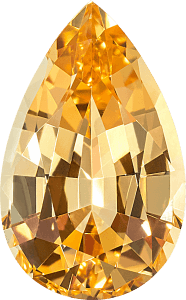
While most might associate Topaz with a pale blue stone, Topaz actually comes in a plethora of hues and from a variety of sources around the world, with the most prevalent of these being Brazil, Nigeria, Sri Lanka, Mexico, Pakistan and the United States. Most natural Topaz is either clear and colourless or yellowy brown, but the extremely rare, intense reddish-orange hued stone known as 'Imperial Topaz' is natural and not normally treated. Besides this exception, coloured Topaz in yellow, orange, pink, red and the more common blue are usually attained by heat treatments and/or a form of radiation treatment. These treatments are stable and safe.
Topaz is a great stone choice for everyday jewellery selection as it is normally available in large sizes, with stones of good clarity, a hardness rating of 8 and good toughness.

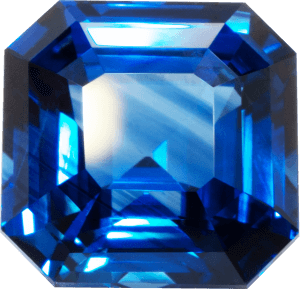
Sapphire and Ruby actually belong to the same Corundum family of minerals, but merely differ in colour. Today, they are mined in locations around the world, though the most ‘famous’ sources for these stones are Myanmar, Sri Lanka and East Africa.
While the name ‘Ruby’ is typically reserved for red corundum, Sapphire occurs in a whole spectrum of colours, from yellow to pink, violet, peacock, and teal. With treatment, they can become other colours too. Cornflower Blue Sapphires, Royal Blue Sapphires and Padparadschas are some of the most famous, specifically named colours of this gem type. Gem-quality stones of these types are very, very rare, especially pieces that are untreated.

Padparadsha is the name given to Corundum Sapphire, which has the perfect blend between pink and orange, like a blushing sunset, or the same hue as Lotus Flower petals. Padparadscha means ‘Lotus Flower’ in Singhalese, the language of Sri Lanka, which is the most famous source for the production of these stunning and very rare stones.
Sapphire is an excellent choice for everyday wear as its hardness is 9 on the Moh’s scale, meaning that they are very difficult to scratch. Indeed, they can only be scratched by other corundum and Diamond.
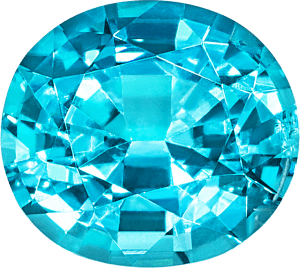
Tourmaline occurs naturally in all colours of the rainbow. It is mined in locations around the world with some locations being famed for particular colours. As a stone choice for everyday jewellery wear, it is perfect as it is hard, having a rating of over 7 on the Moh’s scale and is also very tough, being generally clean and quite inclusion free.
Pink Tourmaline is more prevalent than blue Tourmaline, and of the range of blues which Tourmaline comes in, indigo Tourmaline, or ‘Indicolite’ is one of the very most stunning and desirable of coloured stones. Some Tourmaline gems may contain two or more distinctive colors and are commonly known as bi-color Tourmalines. Sometimes they show a gradient from blue to white, and other times, they go from pink to white to green, affectionately termed ‘Watermelon Tourmaline’.

The pinnacle of the Tourmaline family is Paraiba Tourmaline, a copper-bearing neon blue-green Tourmaline. Named after its source, Paraiba, Brazil, this Tourmaline is a highly saturated neon turquoise and is so rare that it commands prices comparable to some of the most expensive stones on the market. Paraiba is also the only member of the Tourmaline family in which eye visible inclusions are the norm.
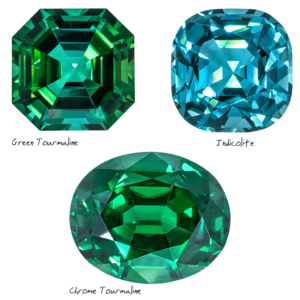
Emerald is one of the most famous coloured gems. Their amazing, vibrant green hue and interesting, somewhat chequered history makes them one of the most desirable gemstones of all. First discovered in Colombia by the Incas and Aztecs, Emerald was highly prized all the while, but when the Spanish conquistadors looted thousands of Emeralds from the mines in South America, 16th century violence became part of their history, and also put South America firmly on the worldwide gemstone map, with European royalty looking to the region for the rich green treasures. Historically, Emerald is thought of as a Colombian gemstone, but there are sources today producing gem quality stones in Zambia, Colombia, India, Afghanistan and Brazil amongst others.
Emerald is one of the few gemstones that are regularly treated, and the vast majority of Emerald in the market today is treated by being 'filled' with Cedar oil which makes them visually less apparent, though still visible. This is because Emerald inherently contains many inclusions, or more poetically termed ‘Jardin’, French for garden. Due to the rarity and demand for Emeralds, inclusions in Emerald are more acceptable than in other gems. Sizeable Emeralds that are untreated and totally free of inclusions are so rare as to be impossibly costly for most to acquire.
Emeralds are one of the more brittle gemstones despite having a rating of 7.5-8 on the Moh’s scale because of their Jardin. So while they are suitable for daily wear, care must be taken and Emeralds should never be cleaned in an ultrasonic cleaner.


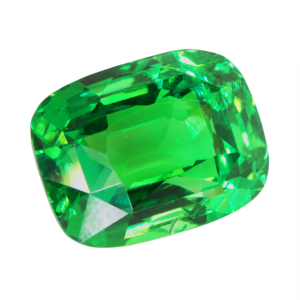
There are many different types of Garnet, from Tsavorite, to Demantoid, Malaia, colour change Almandine, Rhodolite and others too. While it is fair to say that all gem quality Garnets are rare, some are very rare and others are super rare! Tsavorite Garnet, in its stunning green colour, is normally eye clean, free of inclusions and has a colour arguably comparable to, or even superior to Emerald. It is also 300 times more rare than Emerald!
Mined in Tanga, Tanzania, Malaia Garnet is an extremely unique and rare stone. Its stunning and romantic pale sunset hue, almost like Padparadscha Sapphires, bewitches many. Its name comes from the Swahili word for “misfit” because miners who were looking for the purplish red Rhodolite Garnet came across a pocket of these sparkling pinkish orange crystals they had never seen before.
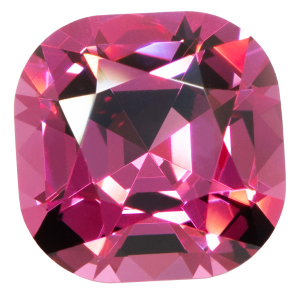 Demantoid Garnet is another exceedingly rare species which are most prized when they are a vibrant yellowish green as their colour is benchmarked against gems from the ‘original’ Russian mine in which they were discovered. Demantoid featured in many of Fabergé’s important jewels and Objet d'art, but production from the original Russian mine ceased in the 1920s. Demantoids are so named because of their high refractive index which makes its ‘light scattering degree’/‘sparkle’ astonishing, surpassing that of Diamonds (‘demant’ meaning diamond in Dutch). These are one of the rarest stones, and are also one of the stone types that are valued even more if they contain visual characteristics (inclusions) called 'horse-hairs'.
Demantoid Garnet is another exceedingly rare species which are most prized when they are a vibrant yellowish green as their colour is benchmarked against gems from the ‘original’ Russian mine in which they were discovered. Demantoid featured in many of Fabergé’s important jewels and Objet d'art, but production from the original Russian mine ceased in the 1920s. Demantoids are so named because of their high refractive index which makes its ‘light scattering degree’/‘sparkle’ astonishing, surpassing that of Diamonds (‘demant’ meaning diamond in Dutch). These are one of the rarest stones, and are also one of the stone types that are valued even more if they contain visual characteristics (inclusions) called 'horse-hairs'.


In the ancient language of Sanskrit, Ruby is called Ratnaraj, ‘king of precious stones’, they’ve been mentioned in the Bible four times, records suggest that they were traded along the Silk Road from 200BC and Chinese noblemen even used to adorn their armour with them for protection! That’s how treasured and revered Rubies have been through time. Gem-quality stones of these types are very, very rare, especially pieces that are untreated. The most desirable hue, Pigeon-blood Ruby, is exceedingly sought after and the prices sometimes surpass even that of the finest Diamonds. However, on many occasions, clients actually prefer brighter hued Rubies to the famed ‘Pigeon-blood’-- that’s the beauty of coloured stones, there’s a myriad of options for every client and budget, or whim and fancy.
Ruby, like its blue sibling, Sapphire, is an excellent choice for everyday wear as its hardness is 9 on the Moh’s scale, meaning that they are very difficult to scratch. They can only be scratched by other corundum and Diamond.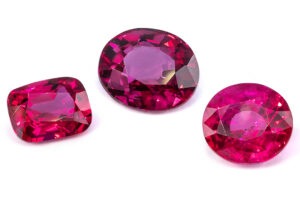

Throughout history, Spinel has been a bit of an 'underdog'; certainly misunderstood and definitely mistaken for other stones. This is partly because of the wide variety of colours in which it can be found, but also because of its superb colour saturation and clarity making it easy to mistake for other stones such as Ruby or Sapphire. In fact, one of the most famous examples of this is the 170ct red Spinel which is currently the centrepiece of the United Kingdom's Imperial State Crown. Named the Black Prince Ruby, it dates all the way back to the 14th century, which shows how long Spinel has been under appreciated for!
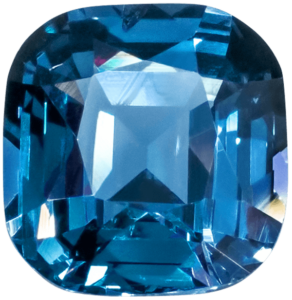
These days, Spinel is appreciated and valued in its own right as a gemstone due to its excellent hardness, durability and beauty. It was most recently brought to attention in 2007, when a whopping 54 kg of the most spectacular, and now fabled, fiery pink-red Spinel roughs were discovered in Mahenge, Tanzania, reigniting the modern world’s desire for Spinels. Mahenge is now known as one of the world’s premium sources of vibrant pink Spinel. It is mined in various locations around the world, though some of the finest examples are found especially in Mahenge, Tanzania but also Mogok, Myanmar and Ratnapura, Sri Lanka.
MADLY is the only company in South East Asia with a direct sourcing office in the Mahenge region, which means that we have first pick of all of the best Spinel roughs coming from the mines in the area.
 Known for their honey hues and neon greenish-yellows, it was aptly named ‘gold-coloured beryl’ in Greek, even though it is nothing similar to the Beryl family of Emerald, Aquamarine and Morganite. Rating 8.5 on Moh’s scale of hardness, it is the third hardest natural gemstone, making it perfect for daily wear. And, you’d be amazed to find out that the famed ‘Alexandrites’ are actually colour-changing Chrysoberyls!
Known for their honey hues and neon greenish-yellows, it was aptly named ‘gold-coloured beryl’ in Greek, even though it is nothing similar to the Beryl family of Emerald, Aquamarine and Morganite. Rating 8.5 on Moh’s scale of hardness, it is the third hardest natural gemstone, making it perfect for daily wear. And, you’d be amazed to find out that the famed ‘Alexandrites’ are actually colour-changing Chrysoberyls!
When Chrysoberyls are translucent or with silk (rather than transparent), they are usually cut into cabochons which might bring out a ‘Cat’s Eye’ effect, otherwise known as Chatoyance. This only happens when the inclusions are perfectly parallel, similar to a spool of silk thread which will produce a line of reflection across the top of the spool as it is moved back and forth under a source of light. Magical!

At our sourcing office, we had chosen a couple of Chrysoberyl roughs straight from the calloused hands of the miners, sent them to be cut with our master lapidary artists. Only expecting to get some rich honey-hued and lemony Chrysoberyls, we were so excited and amazed to find that one of them is a 3 carat Alexandrite (center)!
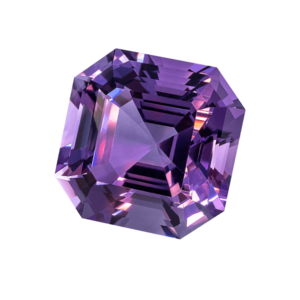
These names describe colours of natural Quartz (purple, yellow and a mixture of both). Their deep, highly saturated hues and, often, a total lack of inclusions makes them perfect for your jewellery pieces!
Natural Citrine is quite rare and is usually made by treating Amethyst to change the stone’s colour from purple to yellow. The rarest of all Quartz is known as Ametrine, which has zones of both purple Amethyst and yellow Citrine, and is mined only in one place in Bolivia. The majority of Ametrine on the market today is created by the treatment described above.
Because of the nature of Amethyst and the Quartz family of stones, synthetic stones of this type are very rare and do not frequently find their way into the supply chain.
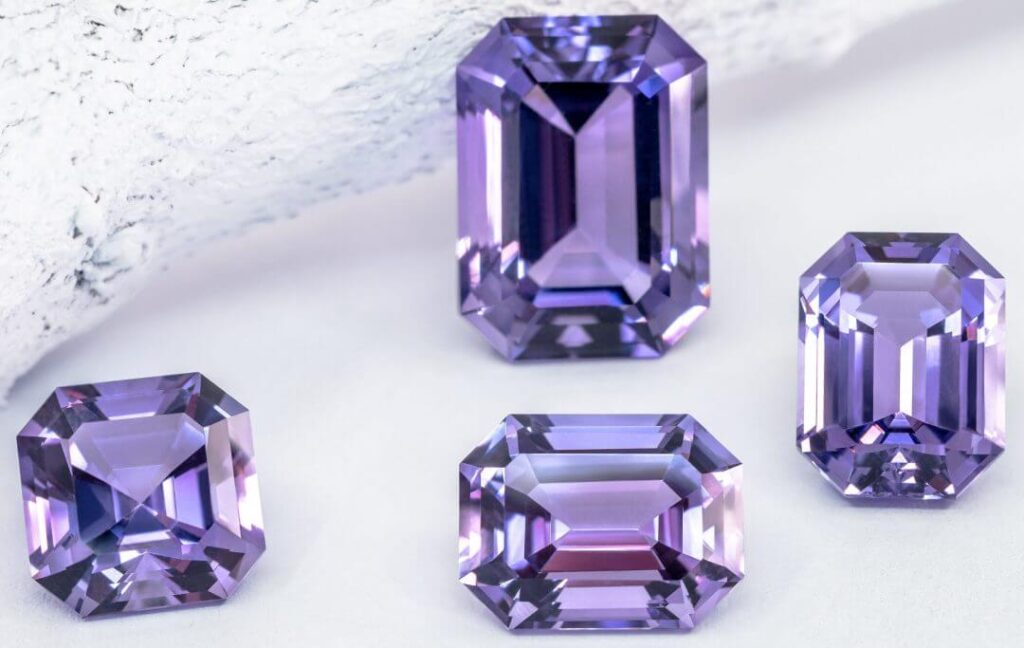
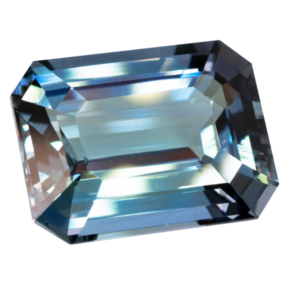
Found exclusively in the country of Tanzania (hence, the name!), near the Merelani Hills, Tanzanite was first discovered by a Maasai tribesman in 1967 who at first thought he had stumbled upon a Sapphire deposit. But in fact, he had found a stunning, unique type of purple/ blue Zoisite which was renamed by Tiffany & Co., the first company to use the stone in high jewellery. According to a Tanzanian geologist, the unique circumstances which sparked the formation makes it highly unlikely that a new Tanzanite deposit will be found anywhere else in the world, making them a thousand times more rare than Diamonds. At the current rate of mining, it is likely that the available supply will be depleted in this generation.
Most Tanzanite is trichroic, appearing either blue, violet, or burgundy depending upon the direction of light being reflected from the stone. This phenomenon complicates the cutting process, making it imperative that the best gem cutters are employed to bring out the full potential of the rough. Most gem quality Tanzanite in the marketplace is heated to give a deep, strong saturation though occasionally some paler but equally stunning unheated material becomes available.
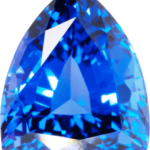 Tanzanite rates 6.5 - 7 on the Moh’s scale, which means that it is suitable for most everyday jewellery, although necklaces and earrings would be best. Due to the way Tanzanite crystals form, there is an availability of good sized stones, in sizes above 3 carats.
Tanzanite rates 6.5 - 7 on the Moh’s scale, which means that it is suitable for most everyday jewellery, although necklaces and earrings would be best. Due to the way Tanzanite crystals form, there is an availability of good sized stones, in sizes above 3 carats.
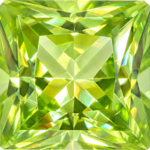
Ancient Egyptians considered Peridot the ‘gem of the sun’, sent to Earth by the explosion of a star. Fittingly, they’re often formed in lava at the Earth’s mantle, and then propelled near enough to the surface of the Earth for it to be mined. This is precisely why gem-quality Peridot in large sizes is rare; in their journey to the surface of the earth, most are susceptible to weathering and lose their sparkle and clarity.
Peridot rates 6.5 to 7 on the Mohs hardness scale which makes it durable enough for jewellery wear but should be worn with some care so as not to scratch it or subject it to hard blows that can fracture it.
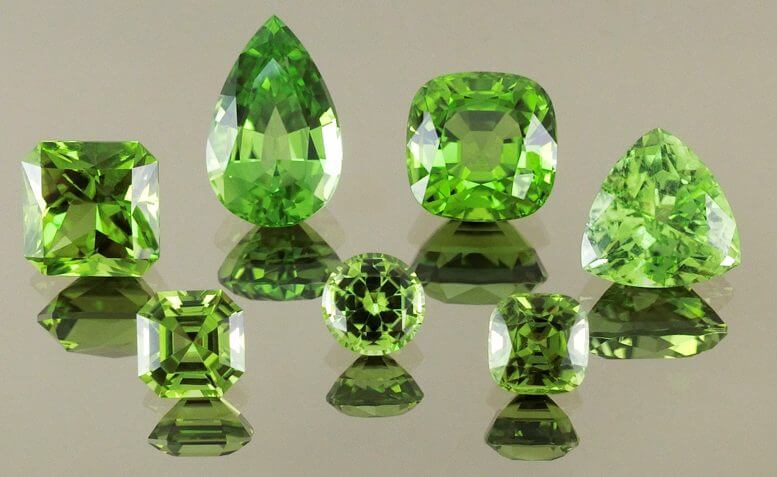
Morganite is another relative of Aquamarine and Emerald, a member of the Beryl family. I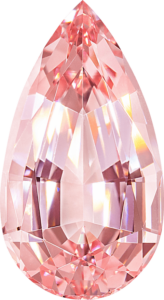 t is arguably more closely related to Aquamarine in its presentation, with its equally 'clean' persuasion, without any visible inclusions, but exhibiting a lovely 'salmon' pinky orange colour.
t is arguably more closely related to Aquamarine in its presentation, with its equally 'clean' persuasion, without any visible inclusions, but exhibiting a lovely 'salmon' pinky orange colour.
It was named after J.P. Morgan (of the banking and finance fame) by George Kunz, chief Gemologist at Tiffany and Co. for the simple reason that Mr. Morgan was an avid gem collector and their best customer at the time!
While poor quality, low saturated Morganite is quite common, highly saturated, well cut examples of gem quality material are becoming more and more sought after in the jewellery industry. This is because of the flexibility it offers since it is hard (over 7.5 on Moh’s scale), stunningly beautiful when well cut and also available in various sizes.

Aquamarine is a member of the Beryl family, closely related in mineral composition to Emerald even if they do look completely different! One of the most obvious differences between the two is that while inclusions are the norm for Emerald, Aquamarine is normally expected to be far cleaner to the naked eye, with little to no visible inclusions.
Pale coloured Aquamarine is relatively common and available in very large pieces, often over 20 carats in size. However, highly saturated, deep blue stones of fine gem quality are rare to find and command a premium. Notably, the most desirable Aquamarine colour is known as ‘Santa Maria’, named after a mining area of Brazil where Aquamarines of such saturation were previously found. Even though this source is now exhausted, the term is still sometimes used to describe the colour of stones from other sources which display similarly high levels of saturation.
With a rating of over 7.5 on the Moh’s scale and its stunning colour, Aquamarine is perfect for creating stunning pieces of jewellery for everyday use.

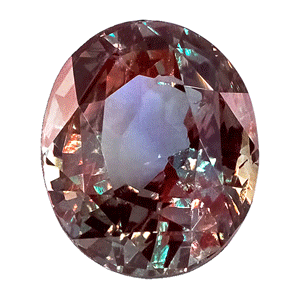
Alexandrite is an amazing gemstone that displays a stunning colour change phenomenon, appearing green in natural daylight and red under candlelight. The colour change in the highest quality Alexandrite is so extreme that it has been called ‘Emerald by day, Ruby by night’.
Alexandrite was first discovered in the Emerald mines of the Ural mountains, Russia, in the early 17th century. It was named after Czar Alexander II. Deposits have since been found in Brazil and India with Brazilian Alexandrite being the preferred source. Alexandrite is super rare in sizes above 1 carat and top stones command prices comparable and sometimes exceeding other, better known precious stones.
With a hardness rating of 8.5, it is perfect for everyday wear in rings and other pieces which are often put ‘in harm’s way’, and will be a conversation starter on any occasion.
 We are one of the first few jewellers in the world, and the first in Singapore to be Accredited Ethical Members of the International Colored Gemstone Association.
We are one of the first few jewellers in the world, and the first in Singapore to be Accredited Ethical Members of the International Colored Gemstone Association.
Not only are we able to obtain our gemstones directly from the source, we also have an in-house gemologist to ensure their authenticity and quality. During your appointment, feel free to ask our team of GIA graduates about the stone that catches your eye and steals your heart; they’d be more than happy to share more. Till then, click on each gem to learn a little more about them!